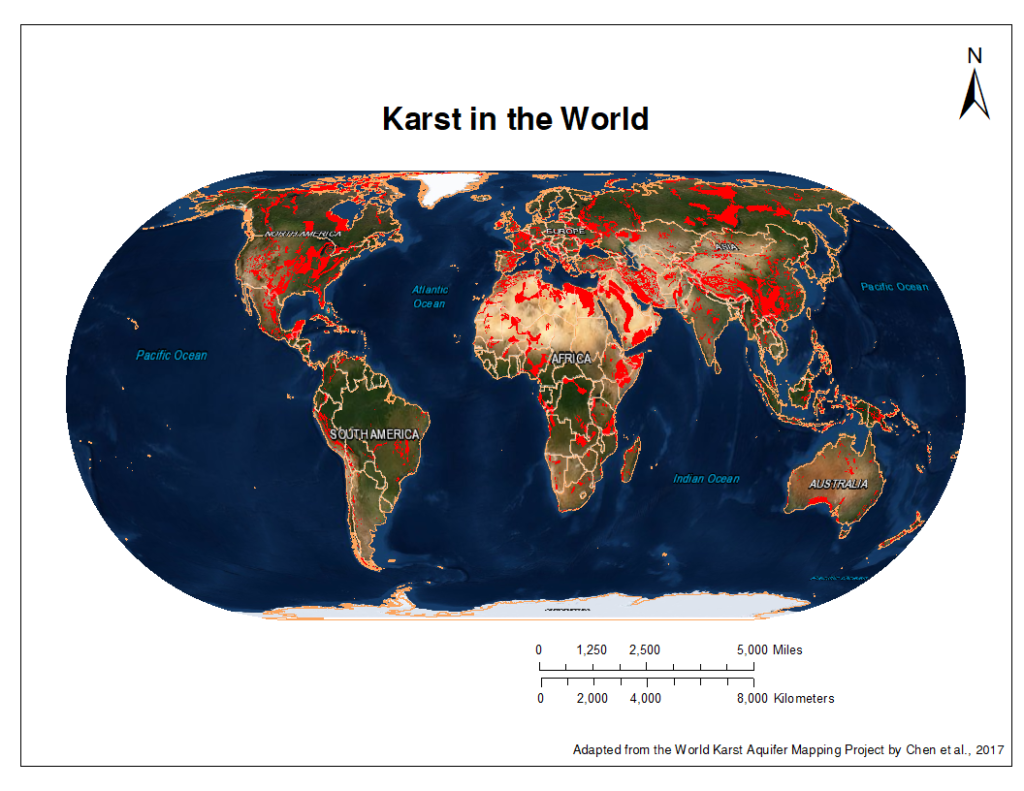Where is karst?

Why is karst important?
About 700 million people worldwide depend on groundwater in karst aquifers as their main source of water. The world’s largest springs and most productive water wells flow from karst. But karst aquifers are easily contaminated and poorly understood. For example, karst groundwater pollution, in May 2000 in Canada, resulted in the death of seven people and illness in 2,300 more. Karst aquifers require greater protection than non-karst aquifers. Without an accurate understanding of cave and karst environments, citizens, developers, and policymakers are ill-equipped to make effective decisions about using and managing karst and its resources.
Karst provides important resources beyond drainage and drinking water. It offers habitat for unusual, rare, and endangered species in its caves, springs, and among its unusual landforms. Some of the most fantastically scenic landscapes on Earth are in karst. Over 90 World Heritage sites and 70 UNESCO Global Geoparks were designated entirely or in part for their karst and caves. These and other parks, as well as the hundreds of show caves worldwide, provide stirring educational recreational experiences, while sustainably pumping billions of dollars each year into local economies.
Karst is also important for the challenges and problems it poses to people. In the USA, sinkhole collapses cost over $300 million in just highway damage each year. Insurance claims for property loses to sinkhole collapses in the state of Florida alone coincidentally total about $300 million each year too. Dam construction in karst is fraught with difficulties. How do you build a dam to hold water when the land is full of holes? And how stable are dams when built on such landscapes?
While karst offers unique research opportunities to overcome its challenges, and also to benefit people in many ways, perhaps its greatest importance to humanity is through inspiration. The bizarre and mysterious landforms of karst landscapes have fired people’s imaginations throughout history. Religion, literature, art, and the spirit to strive, learn, and explore, have all been inspired by karst. And they still inspire us. The world would be a far less magical place if we didn’t have karst.
Where does the word come from?
The origin of “karst” dates to Pre-Indo-European languages when “karra” meant “stone.” In the area that is now southern Slovenia and northeast Italy, karra changed to “kras” and was used to describe the unusual rocky landscape which is now called the Classical Karst. When the Austro-Hungarian Empire dominated that region, “kras” was Germanized into “karst.”